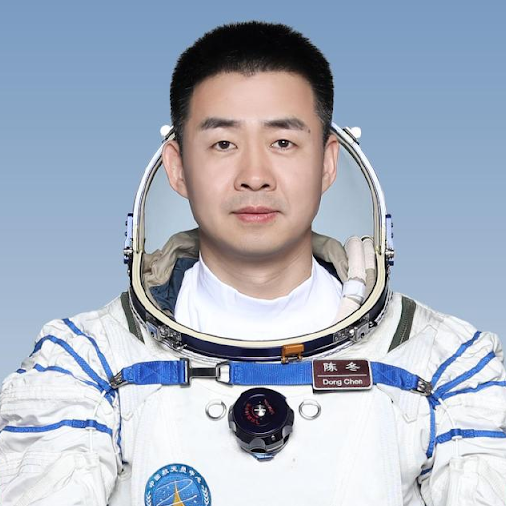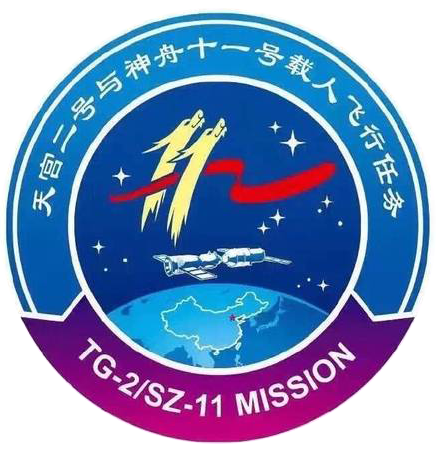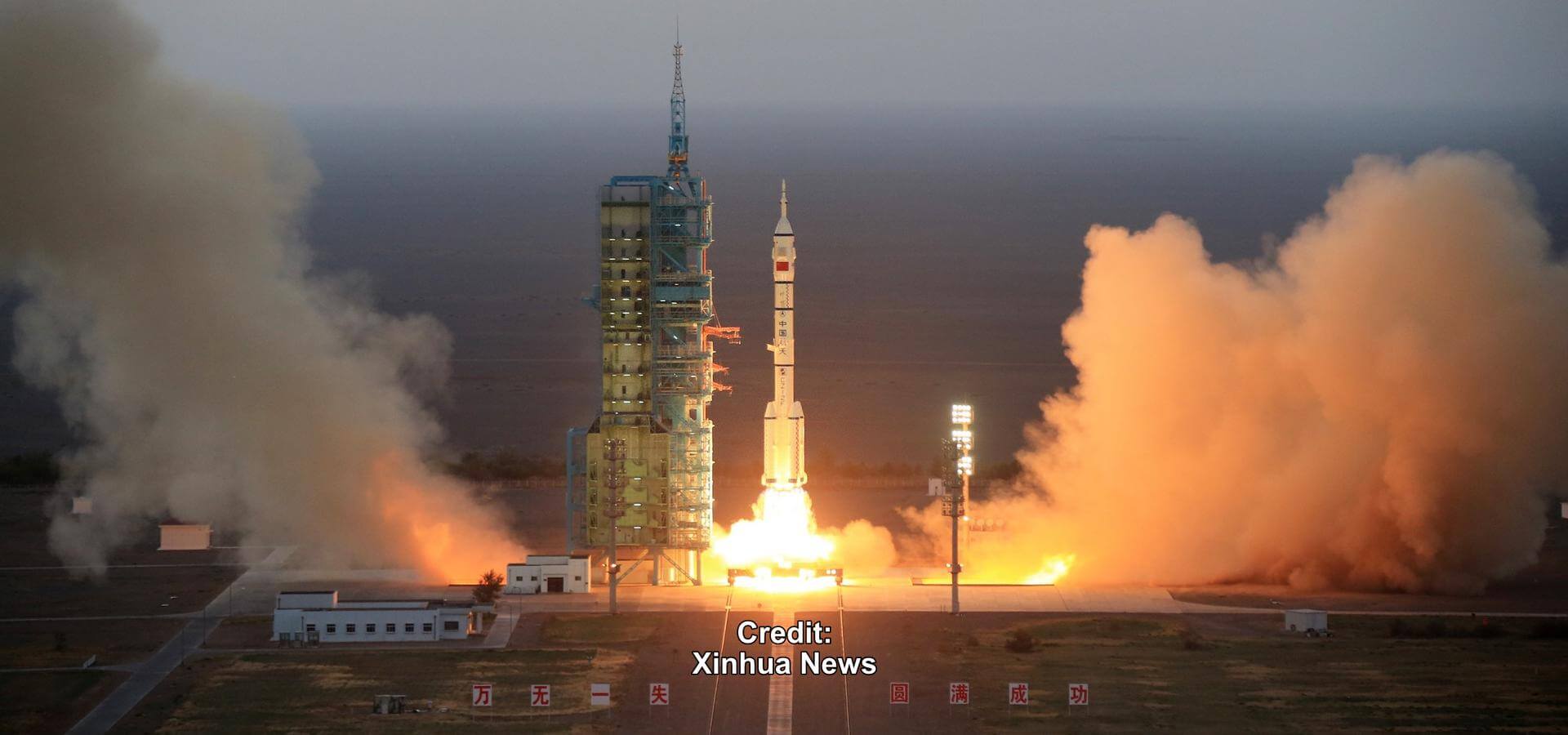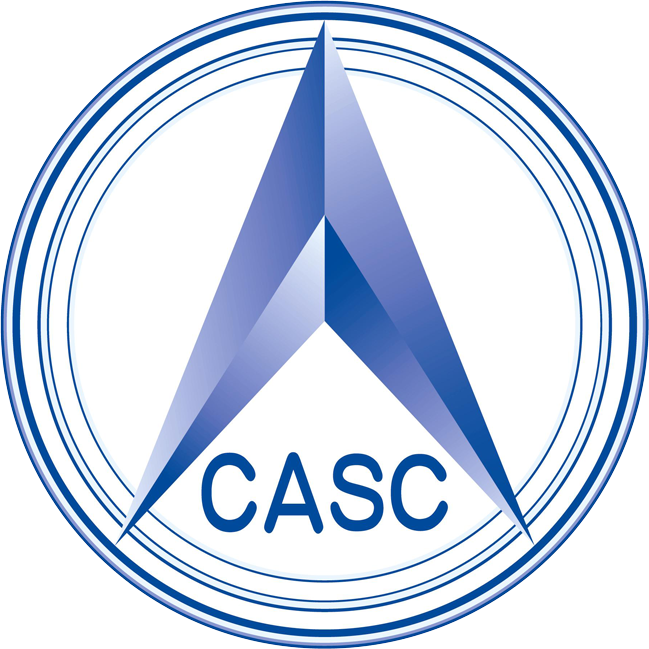Shenzhou-11
Long March 2F/G
China Aerospace Science and Technology Corporation
Crew

Jing Haipeng
- Birthday: 10/24/1966
- Role: Commander
- Nationality: Chinese
- First Flight: 09/25/2008
- Last Flight: 05/30/2023
Jing Haipeng (simplified Chinese: 景海鹏; traditional Chinese: 景海鵬; pinyin: Jǐng Hǎipéng; born October 24, 1966) is a Chinese pilot and astronaut selected as part of the Shenzhou program. A fighter pilot in the People’s Liberation Army Air Force, he was selected to be a CNSA astronaut in 1998. He is the first Chinese astronaut to have flown on three missions: Shenzhou 7, Shenzhou 9 and Shenzhou 11.

Chen Dong
- Birthday: 12/12/1978
- Role: Flight Engineer
- Nationality: Chinese
- First Flight: 10/16/2016
- Last Flight: 06/05/2022
Chen Dong (simplified Chinese: 陈冬; traditional Chinese: 陳冬; pinyin: Chén Dōng; born 12 December 1978) is a Chinese pilot and astronaut selected as part of the Shenzhou program.
He was selected to fly on the Shenzhou 11 mission in October 2016 with astronaut Jing Haipeng. The two underwent more than 3,000 hours of training before the launch of the spacecraft. On 17 October 2016 On 07:30 local time (23:30 GMT on 16 October), Chen lifted off with Shenzhou 11 for a 33-day space mission to the Tiangong-2 space station as his first spaceflight, launched from the Jiuquan Satellite Launch Center using a Long March 2F launch rocket. The crew landed successfully after the 33 day mission on 18 November 2016, marking China’s longest manned space flight to date. The reentry module of the Shenzhou-11 spacecraft landed in Inner Mongolia around 2.15 p.m(China time) after detaching from the space lab on 17 November.
Mission
Shenzhou-11
- Type: Human Exploration
- Orbit: Low Earth Orbit
This is the sixth crewed mission for China’s Shenzhou program. Shenzhou-11 will carry two taikonauts, Jing Haipeng and Chen Dong, to the Tiangong-2 space station launched earlier in the year. The taikonauts will stay in Tiangong-2 for 30 days.
Location
Launch Area 4 (SLS-1 / 921)
Jiuquan Satellite Launch Center, People’s Republic of China
Launch Area 4 (SLS-1 / 921) has witnessed the launch of 22 rockets, including 22 orbital launch attempts, while Jiuquan Satellite Launch Center, People’s Republic of China, has been the site for 222 rocket launches.
Rocket
China Aerospace Science and Technology Corporation Long March 2F/G
The Long March 2F is a Chinese orbital carrier rocket, part of the Long March 2 rocket family. Designed to launch the crewed Shenzhou spacecraft, the Long March 2F is a human-rated two-stage version of the Long March 2E rocket, which in turn was based on the Long March 2C launch vehicle. It is launched from complex SLS at the Jiuquan Satellite Launch Center.
Agency
China Aerospace Science and Technology Corporation
The China Aerospace Science and Technology Corporation (CASC) is the main contractor for the Chinese space program. It is state-owned and has a number of subordinate entities which design, develop and manufacture a range of spacecraft, launch vehicles, strategic and tactical missile systems, and ground equipment. It was officially established in July 1999 as part of a Chinese government reform drive, having previously been one part of the former China Aerospace Corporation. Various incarnations of the program date back to 1956.



